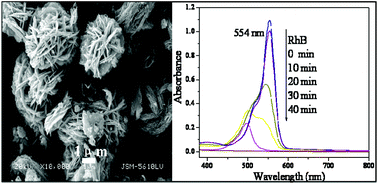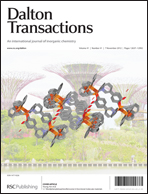The micro/nano-structured CaWO4/Bi2WO6 composite was successfully synthesized by a one-step hydrothermal route without using any templates or surfactants. The as-prepared samples were characterized by X-ray diffraction (XRD), scanning electron microscopy (SEM), transmission electron microscopy (TEM), UV-vis diffuse reflectance spectroscopy (UV-vis DRS), Fourier transform infrared (FT-IR) spectroscopy, thermogravimetry-differential scanning calorimetry (TG-DSC) and Brunauer–Emmet–Teller (BET) theory. The results indicated that the composite has a two-phase composition: CaWO4 and Bi2WO6. The photocatalytic activities of the CaWO4/Bi2WO6 composite were evaluated for the degradation of Rhodamine B (RhB) dye and 4-nitrophenol (4-NP) in aqueous solution under visible-light irradiation (>420 nm), which were 4.5 times and 2.5 times higher than that of the pure Bi2WO6, respectively. On the basis of the calculated energy band positions, the mechanism of enhanced photocatalytic activity for the micro/nano-structured CaWO4/Bi2WO6 composite can be attributed to the effective separation of electron–hole pairs.

You have access to this article
 Please wait while we load your content...
Something went wrong. Try again?
Please wait while we load your content...
Something went wrong. Try again?


 Please wait while we load your content...
Please wait while we load your content...